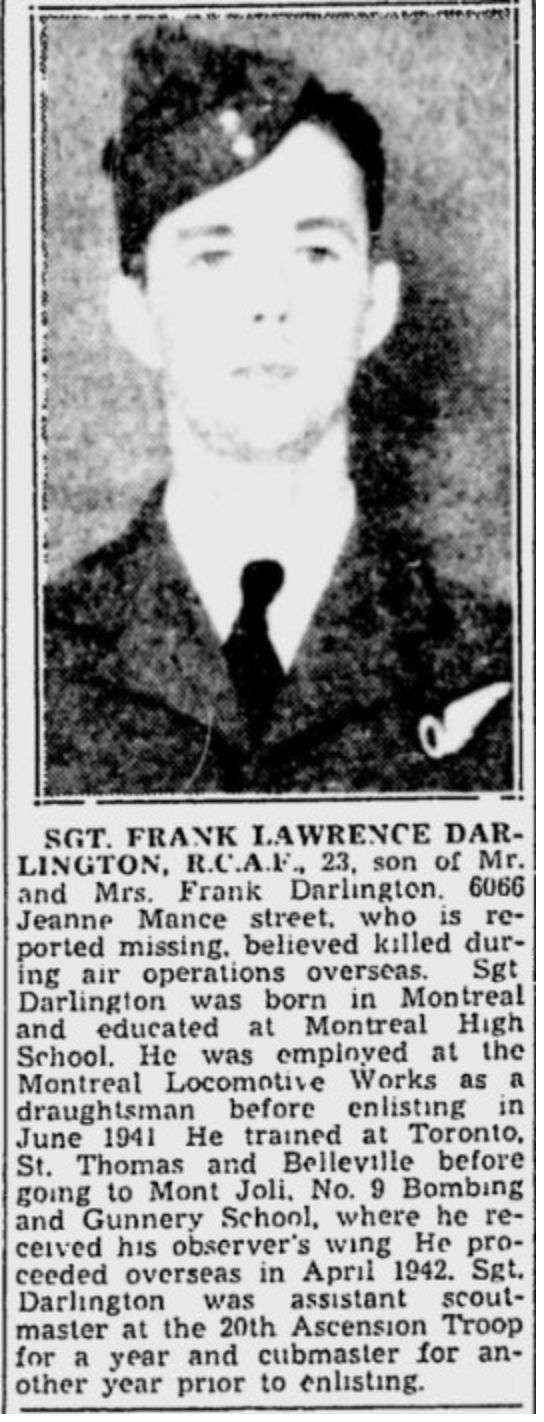Lyon to Letra

The big day has finally arrived. With the bike loaded I took a train into a Lyon. It’s Tuesday morning; the city is busy.
I cycled the short distance across presqu’île, along the banks of the Rhône, Parc de la Tête d’Or, Université Claude Bernard – Lyon 1 and arriving at the Cimetière National Militaire de la Doua.
So, here I am at the start line, the Doua National Military Cemetery in Lyon. Here are the graves of a large number of Servicemen of many nationalities. The reason for choosing this location to start is because here are the graves of four men in particular:
- Sergeant Norman Johnstone RAFVR
- Flying Officer George R Powell RAFVR
- Sergeant Wilfred Baker RAFVR
- Flight Sergeant Frank Darlington RCAF
I’m feeling fit, a little apprehensive and hoping that in 16 days time, I will have done the memories of 3 groups of young men proud.
On y va!
Today's Route
The Lancaster WA118-ZN-Y Admiral Prune from 106 Squadron left RAF Syerston near Nottingham, England at 6:30 pm on 4th February 1943.
It was part of a squadron of 188 aircraft including 77 Lancasters en route to bomb industrial sites in Turin. The last message received at their base at 22:30 stated “Losing altitude quickly, position near Dijon “. It was forced, having two engines on fire, to attempt a landing in a ploughed field, bordered with oak trees above Perrussel. Today it is all fir trees and does not resemble the landscape of 1943.
Four crewmen died, three British and one Canadian.
- Sergeant Norman Johnstone RAFVR buried at the Doua National Military Cemetery
- Flying Officer George R Powell RAFVR buried at the Doua National Military Cemetery
- Sergeant Wilfred Baker RAFVR buried at the Doua National Military Cemetery
- Flight Sergeant Frank Darlington RCAF buried at the Doua National Military Cemetery.

The Canadian Sergeant D.L. Thompson RCAF and the other two crew members, Sergeant P. Ward RAFVR and Sergeant R.P.Sutton RAF, came out alive but were all severely burned.
Sgt J Picken is the only one not to have been hurt. He survived the crash by jumping from the aircraft by parachute.
They were helped that night by Jean and Pierrot Putinier who lived in the hamlet of Chabou. Jean Putinier, unfortunately, died a few weeks before the 70th-anniversary commemoration in 2013. The wounded were then taken by Felix Proton who had a farm in the hamlet of Perrussel not far from the scene of the accident. They were taken on a cart pulled by a horse to his farm and treated by Dr Francoz.
André Duperray who was present at 70th Commemoration saw the aircraft shave the roofs of the la Ferme de la Blanchisserie, with both engines on fire. He quickly went with his brothers to help at the crash site. Lucienne Nicolas and her father tried to take the uninjured rear gunner, J Picken home which could have caused them serious trouble. However, Sergeant Picken finally stayed with the rest of his crew, not wanting to leave them at the Proton Farm of Perrussel.
The next day the Germans came, and the took them to the Tarare Hospital then to Lyon and finally to prison camps in Germany. Little is known of the three surviving English crew members, other than they were POWs in Germany. Some despite their age may still be alive today?
Nothing was left of the plane at the crash site; the Germans came from Lyon in the days that followed to recover as much of the remains of the plane as possible. The cabin was taken away as a single piece on a long truck trailer. Raw materials were difficult to obtain during this war period and so the Germans recovered everything that could be reused and especially those light metals and alloys used in aviation.
View from the Handlebars
Statistics and Route
- Completed
- To do
This post is also available in:
 Français
Français
